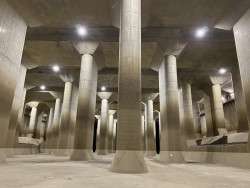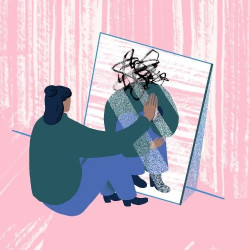
August 16, 2022
Gesshin ~月心~
A Mexican photographer's journey to Japan and discovering herself in the moon
By Metropolis
An interview with Fernanda de Icaza, a Mexican photographer
I moved to Japan when I was 21 years old. I don’t really know exactly what took me to Japan… My grandpa was a painter and he always spoke to me about this mystical country. I don’t know exactly when I decided I wanted to go, but before moving I was working on an art project with a small team in the Guerrero colony of Mexico City. We were assaulted and all of our cameras and equipment were taken. I was just so frustrated – I can’t live without photography and living in a place where I can’t go outside with my camera was out of the picture, so I took a leap of faith and booked a flight to Japan.
When I first landed in Japan I was in awe of everything I saw. I honestly thought to myself “this must be what love at first sight feels like.” The first thing I experienced in Japan was riding the train from Narita to Tokyo. I was taken aback by how calm, relaxed and quiet everything seemed, especially considering how loud Mexico City can be. In some sense, I found the peace that I was looking for when I left Mexico and that contributed to the sensation of being safe. I’ve always been a quiet person, quite shy, and I’ve never been a great communicator with words and usually keep to myself. Arriving in a place where I can’t understand any of what is being said or any sign on the street allowed me to take a step back and enjoy being in my mind and take in all the sights and sounds. It was a very special and magical moment for me.
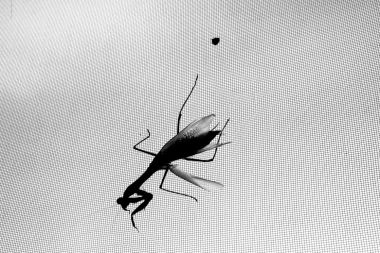
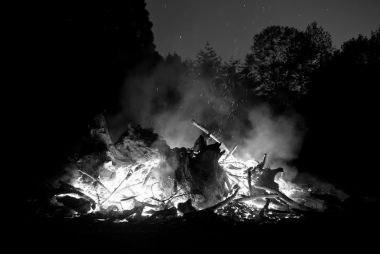
Once all the dust settled I started feeling free– free to leave my house at any time, go anywhere and still feel safe. I felt that I was truly alive. I started going on random adventures, having crazy, unthinkable experiences that I would’ve never had the chance to have back home.
I knew I didn’t want to leave, I didn’t want to go home, I still had so many things that I wanted to learn and see. I suddenly had the idea and urge that I wanted to spend some time in a Zen monastery, so I started shooting out emails to places where I was sure I could enjoy my time and learn. Eventually, I got a reply from a Zen Buddhist Soto Shu monastery in the middle of the Hyogo prefecture mountains. It’s an old monastery run by a German monk who inherited the monastery from the old temple master who thought there was no one more apt and dedicated to preserving the monastery than him.
When I first contacted them I initially told them that I wanted to spend some time there and take pictures. Of course, the temple master said no, but he offered me a place under the condition that I stay and actually be a part of the community to learn from the monastery. I was running out of money and resources so I decided to jump. I took off and went to the mountains.
Not knowing much about Zen or Buddhism, I really didn’t have many expectations except the fact that I’d have a pretty steep learning curve. However, all my thoughts immediately began to change once I actually got there. The scenery was something that I have never seen before, not only physically speaking, but also intellectually. You can feel lingering knowledge in these spaces, it’s quite difficult to describe with words.
I spent the next two months in the monastery. I thought I could stay longer but the harsh schedule and heavy workload were too much to handle at the time. With a heavy heart, I decided to leave and meet my cousin who was living in Kyoto at the time. I spent a few days with her and I was contemplating going back to Mexico, although I was unsure about what I should do moving forward. I ultimately decided to go back to the monastery. I spoke with the temple master and explained my reasoning for coming back and explained that I wanted to be a part of the monastery for a few years. Not expecting much, I waited, until I finally got invited back and I was able to return to the monastery after a tough few months.
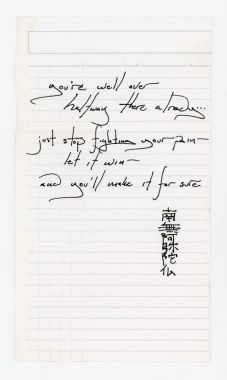
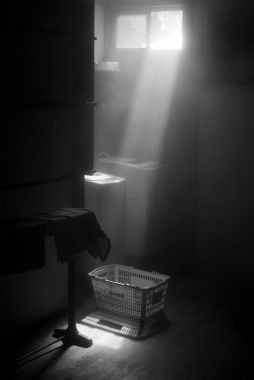
Life at the monastery is pretty rhythmic; you repeat things every day for 4 days and then you have a free day on the 5th. Afterward, the pattern resets and the next 4 days are back to the pattern. I think this is so that you start seeing yourself inside your patterns and, seeing yourself objectively, notice all of your inner thoughts, processes and physical changes.
However, the most important thing I realized was how intensely cyclical I, as a woman am. I started understanding and sensing all the minute details of how my thoughts and inner rhetoric change within a cycle. I think I really learned how to manage and control my emotions and my thought processes to adapt to any sort of situation that I’m placed in.
A usual day at the monastery consisted of waking up at around 3:45 AM and preparing myself for a two-hour meditation from 4:00 – 6:00 AM, followed by ceremonial chants and having breakfast afterward. Then I’d go back to my room, get dressed in my work clothes and return to the food hall where at 7:30 AM we’d have a meeting about who was doing what on that specific day. This particular monastery has large fields where they cultivate the food that we eat which is part of what makes it a self-sufficient monastery. Usually, in other monasteries around the city, you clean and run the usual ceremonies and then rest. However, in this particular one, you have to work every hour of the day with a small lunch break. After work hours you prepare for another two-hour meditation and have dinner. Every 5th day we would have a Sesshin, an all-day long meditation. It’s a very busy routine in which meditation and self-reflection are the center focus.
Usually, after spending a long time in a monastery your master will give you a new name. The one given to me is Gesshin 月(moon)心(Heart). I don’t exactly know why he gave me that name, nor are the temple masters expected to tell you why they chose that name. But I think my temple master got to know me for a really long time and he realized that my mind changes and works cyclically. He must have been inspired by how cyclical and predictable the moon is in the night sky and saw a similarity with how I change throughout the month. Gesshin is my other half– she’s a big part of me and the reason why I decided to call this project Gesshin, in honor of her and my gratitude towards my time at the monastery.
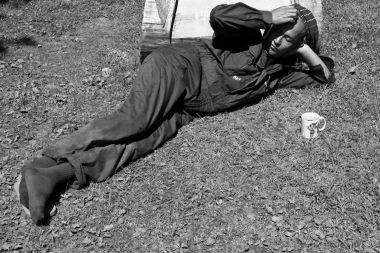
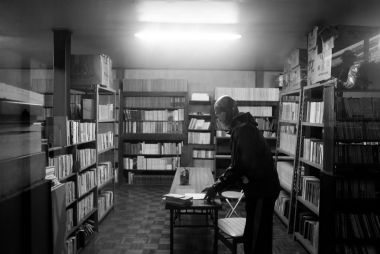
When I ran out of time in the monastery and had to go back home and people started calling me Fernanda again I felt odd. I had been called Gesshin for such a long time, and not being called that anymore saddened me as I had really grown fond of her.
Returning to Mexico was a challenging experience. I wasn’t just returning to Mexico City, I was also returning to society. I had been secluded for such a long time in the mountains that the change in scenery and noise shocked my body. In fact, it was so shocking I decided I didn’t want to interact with the pictures I took during my time there. I left them gathering dust for quite a while until I finally thought I was ready to return to Gesshin from a very distant place. But I soon realized that Gesshin never left me. She had been helping me adapt to my new environment and see myself in the patterns and rhythms of Mexico.
Honestly, this experience was extremely raw. Most people read about monasteries online, and ultimately decide to go with things they want to learn already in mind. However, in my case, I had no clue as to what I was getting myself into. I felt like there was a mystical force pulling me closer to this monastery. I feel like I was able to fully immerse myself and feel the lessons in my body, meeting Gesshin in the process.
Check out more of Fernanda and her exhibition on the Mexican Embassy’s page.

